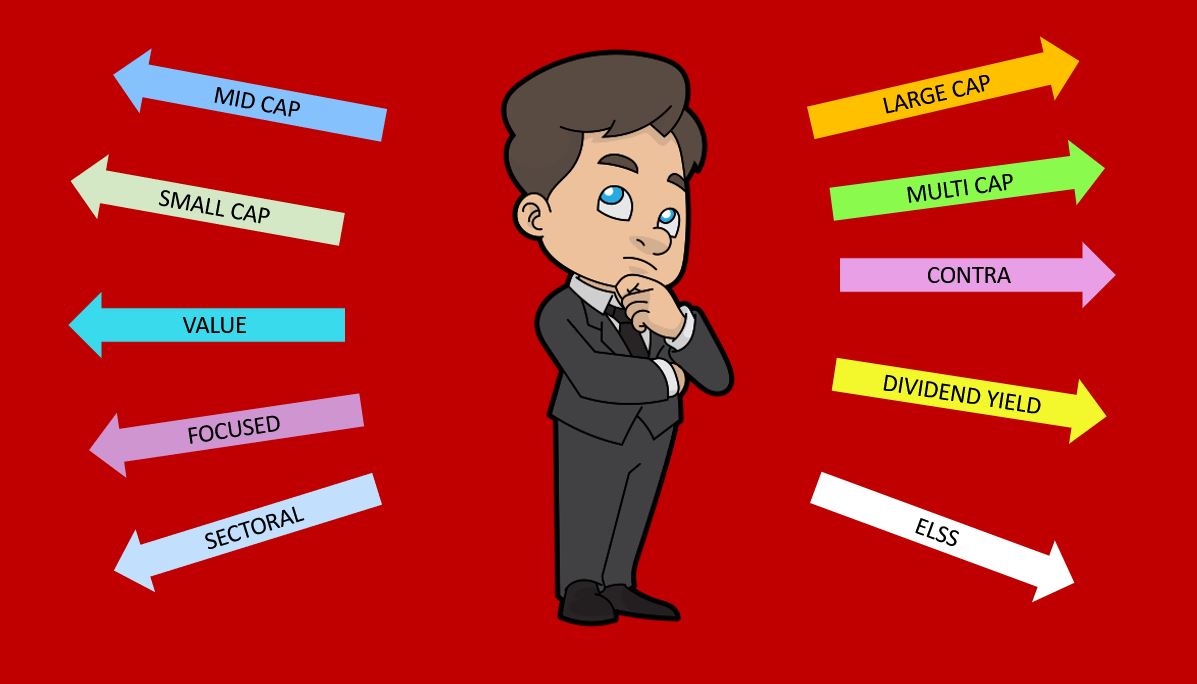When one thinks of investing into Mutual Funds, he encounters a wide spectrum of choices. Equity Funds are an important element as part of the overall asset diversification. Each type of Equity Fund has a peculiar composition of its underlying assets and therefore it is important to pick the right type as per individual investment objectives. The first step is therefore to understand the difference between different types of Equity Funds.
Broad Classification
As per SEBI regulations, the Mutual Fund Schemes are broadly classified into five groups, viz Equity/Debt/Hybrid/Solution/Other, all of which, other than “Debt”, comprise of equity/equity oriented schemes.
Large, Mid & Small Cap
The definitions of Large Cap, Mid Cap and Small Cap for the purposes of MFs are as under:-
(a) Large Cap. 1st -100th company in terms of full market capitalization.
(b) Mid Cap. 101st -250th company in terms of full market capitalization.
(c) Small Cap. 251st company onwards in terms of full market capitalization.
Pure Equity Schemes
Types of Equity Funds falling under purely Equity Schemes are as under:-
(a) Large Cap Fund. 80% in large cap stocks.
(b) Large & Mid Cap Fund. Min 35% in Large and 35% in Mid Cap stocks.
(c) Mid Cap Fund. Min 65% in Mid Cap stocks.
(d) Small Cap Fund. Min 65 % in Small Cap stocks.
(e) Multi Cap Fund. Min 75% in Equity across large/mid/small cap stocks. Further there would be minimum allocation of 25% each to Large Cap, Mid Cap and Small Cap stocks.
(f) Dividend Yield Fund. Min 65% in Equity with dividend yielding stocks. Serves purpose of modest regular income, but offer little growth.
(g) Value Fund. Min 65% in Equity-value investment strategy. Take time to show results.
(h) Contra Fund. Min 65% Equity- Contrarian investment strategy. Can be risky as returns depend on turnaround.
(i) Focused Fund. Min 65% in Equity- Focused on max of 30 stocks. Offer lesser diversification.
(j) Sectoral/Thematic Fund. Min 80% in one particular sector / theme. Highly risky, but if the entry and exit is timed properly can be very rewarding also.
(k) ELSS Fund-Min 80% in equity with 3 yrs lock in. ELSS is good as tax saving alternative, but otherwise the lock in prevents exit.
Hybrid Funds
All Hybrid Funds have a varying proportion of Equity and Debt. As the returns from Equity & Debt components generally move in opposite directions, they aim at giving moderate returns while balancing risk.
Solution-oriented Schemes
These are meant for Retirement and Children. Should be considered at an early stage for meeting desired objectives. However, schemes have a mandatory 5 yr lock in.
Other Schemes
(a) Index Funds/ETFs. low expense ratios, returns reflect the index returns.
(a) Funds of Funds. Over diversification. Suitable for International investments.
Conclusion
The investment objectives should be measured against Risk & Return, both being directly proportional to each other. The risk is lowest in Large cap and increases towards Small cap. It is advisable, and simple, to stay with large/mid/small caps in pre-fixed proportion, unless the investor makes a considered choice from other types to suit his objectives. Index funds for those without Demat accounts, and ETF for those with Demat accounts, are recommended if objective is for returns reflecting the chosen indices. The ETFs chosen should be reflecting high liquidity (volumes) on the exchange.
More about Equity Funds can be found here.

